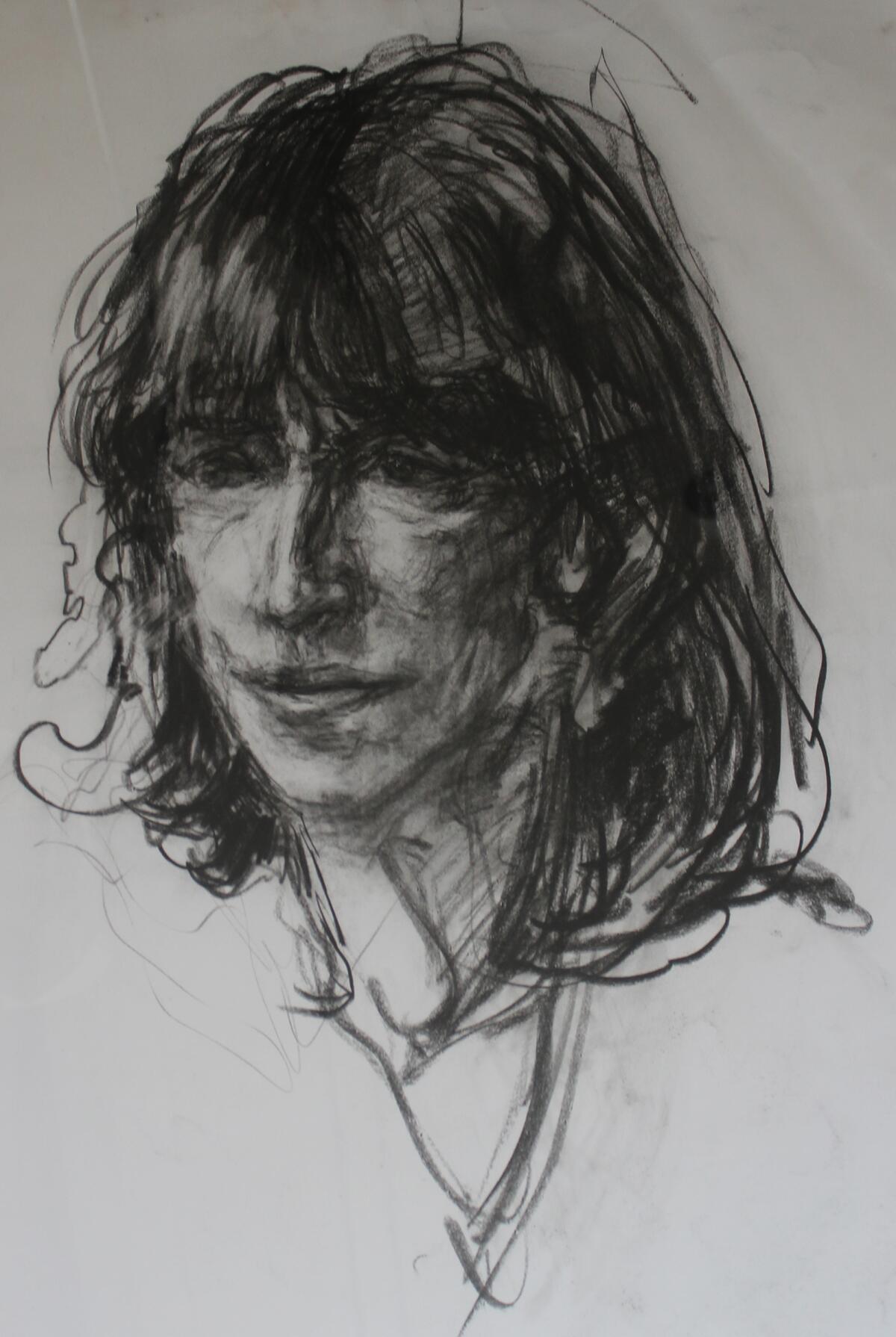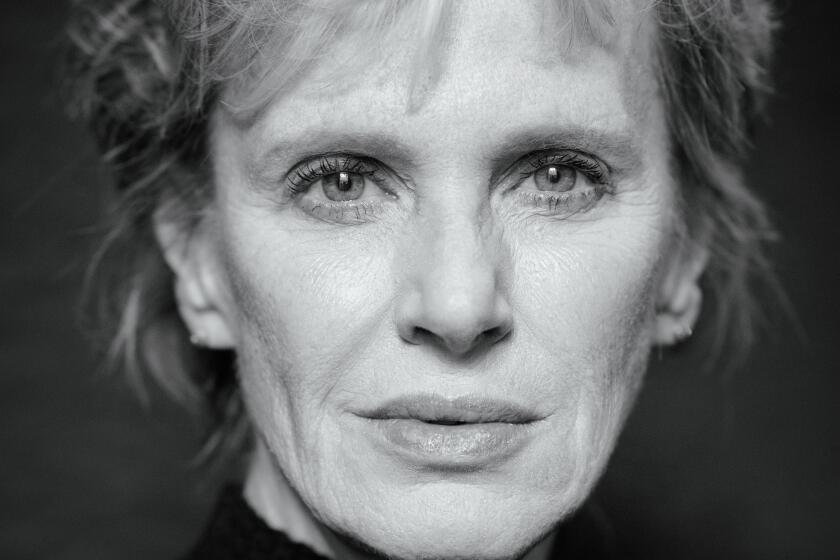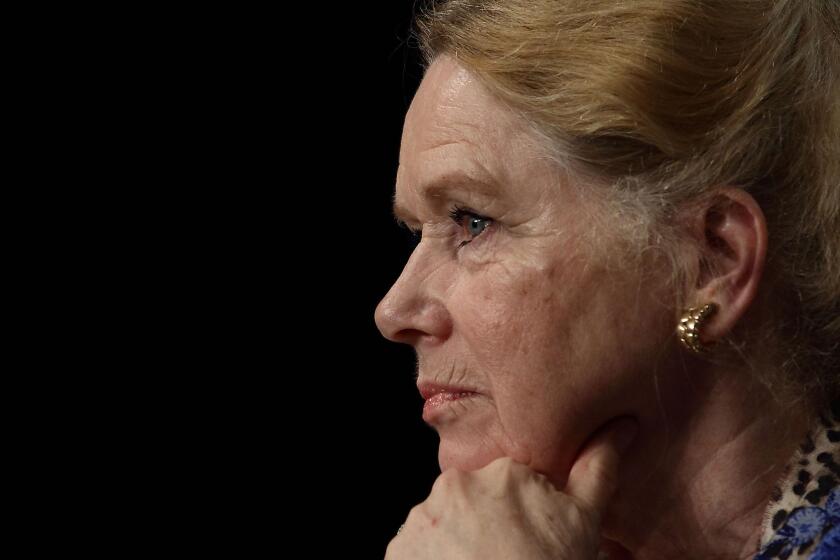From Amelia Earhart to Miuccia Prada, a new book collects history’s ‘left-handed women’

- Share via
Review
A Left-Handed Woman: Essays
By Judith Thurman
FSG: 432 pages, $32
If you buy books linked on our site, The Times may earn a commission from Bookshop.org, whose fees support independent bookstores.
Like one in 10 people, Judith Thurman writes with her left hand. This “used to be considered a malign aberration,” she points out in the introduction to her new essay collection; even when she was a girl, in the McCarthyist 1950s, there were social disadvantages (of more than one kind) to being a “leftie.” Yet this now-unremarkable token of difference seems to have instilled in her a lasting affinity for people — especially women — who, in their lives and careers, have been vilified for swimming against the current.
Extraordinary and unconventional women have long been the object of Thurman’s forensic gaze. A biography of Isak Dinesen won her the National Book Award in 1983; her life of Colette, in 1999, was a nominee. “Cleopatra’s Nose,” her first collection of essays from the New Yorker, where she’s a staff writer, included insightful pieces on Anne Frank, Jackie Kennedy and Toni Morrison. In the new book “A Left-Handed Woman,” her subjects are brought to life as complex, even cryptic characters. “The mystery of how we become who we are” is her enduring preoccupation — an enigma whose sanctity she succeeds in preserving even as she unravels it.
The “left-handed” in Thurman’s superlative anthology include pioneers and icons, artists and writers, actors and fashion designers: Amelia Earhart, Cleopatra, Marina Abramović, Emily Dickinson, Liv Ullmann, Miuccia Prada. But her searchlight also finds figures who are perhaps less than household names. To name a few: Ann Lowe, the groundbreaking Black couturier who made the dress for Jacqueline Bouvier’s wedding to John F. Kennedy; Guo Pei, the Chinese designer behind Rihanna’s extravagant Met Gala gown in 2015; and Betty Halbreich, the legendary Bergdorf’s personal shopper (and occasional memoirist) who dressed Meryl Streep, Joan Rivers and Liza Minnelli.
Movie review: A riveting portrait of ‘Marina Abramovic’
These women have all sought, with varying degrees of success, to transcend what Thurman identifies as the central inhibiting characteristics of womanhood, even today: “The shame of violation; the shame of appetite; the shame of anger; the shame of being unloved; the shame of otherness; the shame, perhaps above all, of drive.” Over and over, she underlines the limits placed on the possibilities afforded to women and their freedom to live full lives. A woman’s distinction, she writes, is generally achieved “at a price their male counterparts didn’t have to pay.”
Thurman’s work is part of the correction. Her essays catalog the duties levied by society on women who pursue alternative paths and celebrate the courage and defiance of those who stay the course. Often the price is paid in mental health. But, as she recalls an aunt once telling her, it’s possible to be “too sentimental about happiness” — feedback that she very much took to heart (“No critique has served my craft better”).
Like many writers with whom she bears comparison — Joan Didion, Janet Malcolm, Susan Sontag — Thurman is often a character in her own work: cruising through Bergdorf’s, pedaling through France, motionless in the perfect darkness of a cave. She is a polyglot and a chameleon, precise, erudite, forthright. Her attention to detail is formidable — she once, at a party, startled “a grande dame” by inquiring if her cocktail dress was a 1948 Dior creation. The woman conceded but begged her: “Please don’t tell anyone that I’ve been wearing it for half a century.”
And like her celebrated peers, Thurman is an impeccable stylist. “The writers I most admire never use a careless word,” she writes. “Their sentences are unimprovable.” Thurman is just such an author; the way she describes the novelist Rachel Cusk’s style (“Her sentences hum with intelligence, like a neural pathway”) could apply just as easily to her. She has an enviably light touch (on Earhart: “There was ether in the very sound of her name”), but she’s capable of artful distillation too. In an essay on Yasmina Reza, the playwright of “Art” and “God of Carnage,” Thurman describes her “mynah bird’s ear for the coded preening, casual profanity, and calculated self-deprecation by which her protagonists — upper-middle-class professionals, for the most part — dissemble their fragility.”
“Mothers, Fathers, and Others” collects essays on maternal bonds, art and analysis, cancer and conception and more from the polymath novelist.
What’s her secret? When approaching a story, it’s essential, she writes, to find the “updraft of cool air” that indicates the presence of a cavity. There’s one hidden “in every story, a recess of meaning, and it’s often blocked by the rubble of your own false starts, or by an accretion of received ideas left behind by others. That updraft of freshness is typically an emotion you’ve buried.” Excavating her own feelings, finding that hidden cavity: This is how, in writing about others, Thurman writes also about herself — and uncovers truth both without and within.
Many of her essays conclude on an unexpected grace note, a shimmering that casts both new light and a subtle shade of doubt on what came before. It’s there in Abramović’s program for her own, somewhat Shakespearean funeral: three cities, three coffins, but no clue to which holds the real body. It’s there in her profile of Reza, whose apparent decisiveness — which “seemed to come, like her prose, from a well of mysterious assurance” — is just a mask: “‘the minute I’ve answered a question I feel like changing my mind.’” It’s there, in all humility, at the end of her piece on Ann Lowe, whose “real story,” she concedes, “is her own best-kept secret.”
These finely pointed endings allow Thurman to classify her subjects without trapping them; she refuses to be another limit imposed on the meaning of their lives. She is instead the butterfly collector who lets her specimens go.
Norwegian actress Liv Ullmann was one of Ingmar Bergman’s most luminous muses, appearing in several of the Swedish filmmaker’s lauded dramas, including 1966’s “Persona” and 1976’s “Face to Face,” for which she earned a lead actress Oscar nomination.
Arrowsmith is based in New York and writes about books, films and music.
More to Read
Sign up for our Book Club newsletter
Get the latest news, events and more from the Los Angeles Times Book Club, and help us get L.A. reading and talking.
You may occasionally receive promotional content from the Los Angeles Times.










